By SYDNEY J. FREEDBERG JR.
Textron Ripsaw M5 robot in an armed configuration
WASHINGTON: How big a difference does it make when you reinforce foot troops with drones and ground robots? You get about a 10–fold increase in combat power, according to a recent Army wargame.
“Their capabilities were awesome,” said Army Capt. Philip Belanger, a Ranger Regiment and Stryker Brigade veteran who commanded a robot-reinforced platoon in nearly a dozen computer-simulated battles at the Fort Benning’s Maneuver Battle Lab. “We reduced the risk to US forces to zero, basically, and still were able to accomplish the mission.”
That mission: dislodge a defending company of infantry, about 120 soldiers, with a single platoon of just 40 attackers on foot. That’s a task that would normally be assigned to a battalion of over 600. In other words, instead of the minimum 3:1 superiority in numbers that military tradition requires for a successful attack, Belanger’s simulated force was outnumbered 1:3.
When they ran the scenario without futuristic technologies, using the infantry platoon as it exists today, “that did not go well for us,” Belanger said drily.
But that was just the warm-up, getting the captain and his four human subordinates – three lieutenants and a staff sergeant, each commanding a simulated squad – familiar with the Army’s OneSAF software. That’s a complex physics-based model so fine-grained it can assess whether an individual (simulated) soldier is killed, wounded or unscathed in any given attack. OneSAF also strictly limits the amount of information each human player gets. They only know what their simulated soldiers on the battlefield could, so it replicates the fog of war, if not the fear.
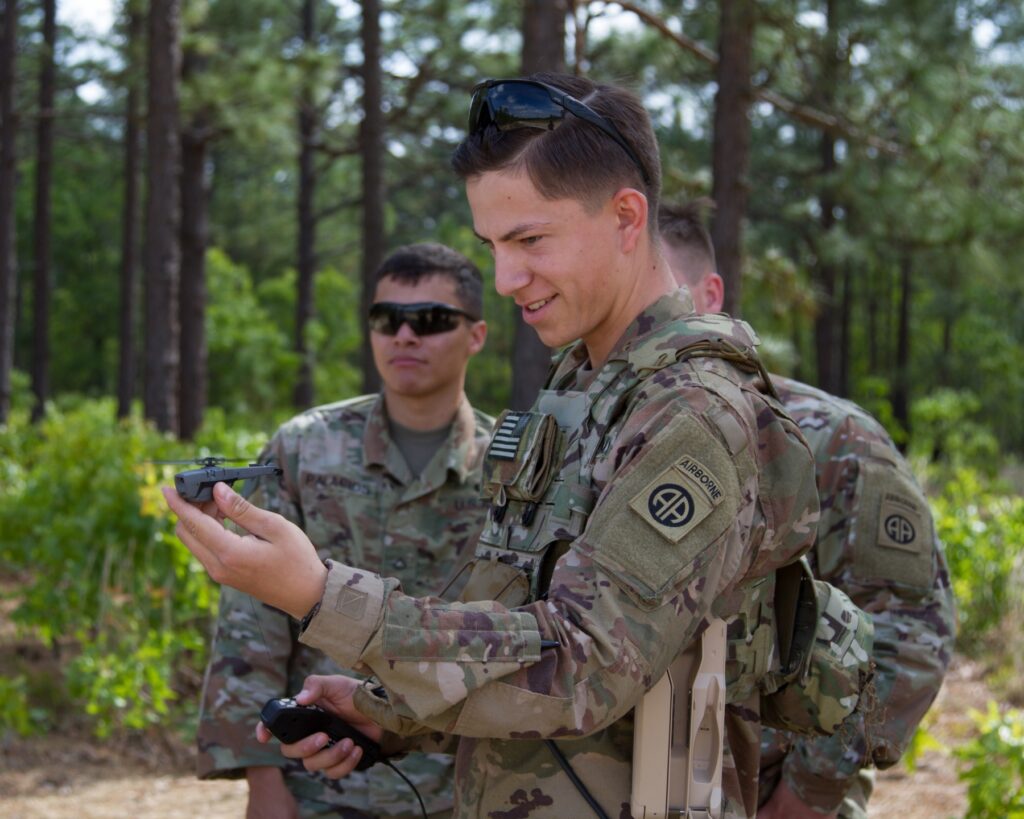
An 82nd Airborne soldier trains with a Black Hornet mini-drone before deploying to Afghanistan.
Then the wargame organizers added dozens of unmanned systems to the simulation. The immediate impact was on what Belanger and his team could see. Instead of being limited to the immediate field of view of their simulated soldiers, they could send the drones ahead to scout. Instead of being able to engage the enemy about 500 meters away (not quite a third of a mile) – or less in dense terrain like a jungle or a city – they could spot and attack them from 5,000 meters (more than three miles).
“It was awesome to be able to increase that zone of where we knew exactly what was going on, without being right on top of the enemy,” Belanger told me. “We were able to pretty much control the amount of area that probably a battalion-minus would have been able to control, with just one platoon.”
That doesn’t mean it was easy to adapt to the new tools. “The first time we used them was definitely a learning curve,” Belanger said. Drones can move much faster than ground robots, but they can’t carry as much firepower as a ground vehicle of similar size and cost. So, at first the fliers rushed ahead, found the enemy position, and then had to wait for the ground units to catch up. Meanwhile the opposing players, controlling the enemy force, noticed the drones and, although they weren’t able to shoot them down – something unlikely to be true with, say, the Russians – they could use the time to ready their defenses. Belanger’s manned-unmanned team still won, but not as decisively as they wanted to.
“Our UAS [Unmanned Aerial Systems] were able to identify exactly where enemy were, but we were unable to kill them without our ground vehicles,” he said. “You have to figure out how you’re going to mass combat power,” rather than attack piecemeal.
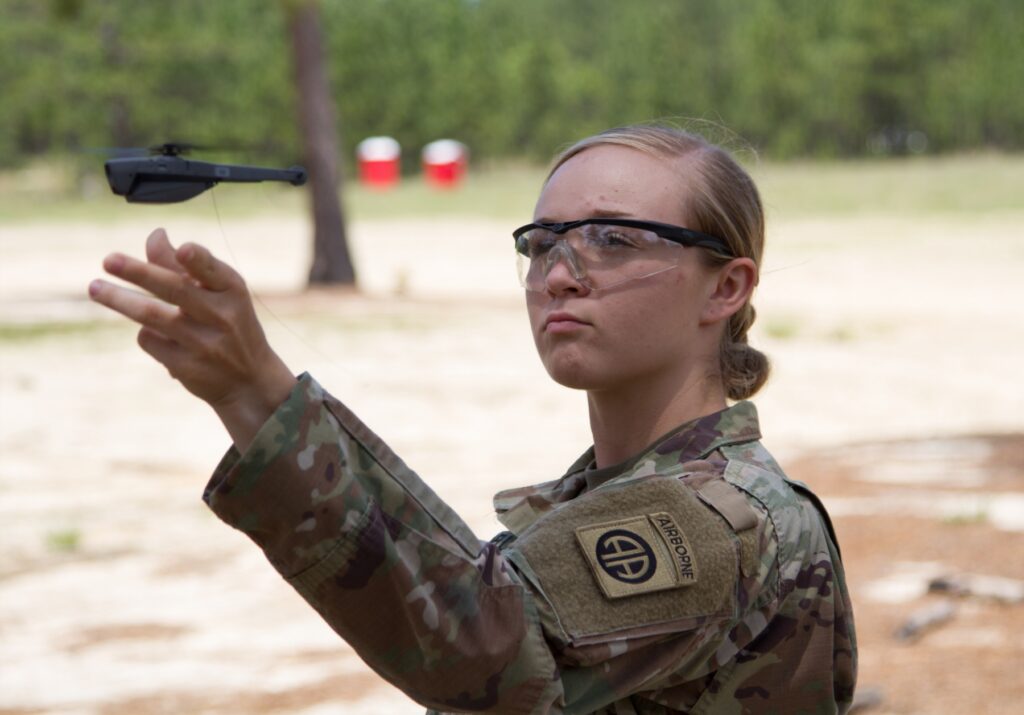
An 82nd Airborne soldier trains with a Black Hornet mini-drone.
“As we did more and more iterations, we were able to build in more control measures and have more of … a human in the loop,” Belanger told me. “After about the second or third run with all the advanced systems,” he said, the human players were able to coordinate the air and ground robots in a single synchronized assault.
Coordinating these high-tech combined arms – aerial drones, unmanned ground vehicles, and human foot soldiers – was a lot more complex than leading an ordinary infantry platoon, Belanger said. While young troops who grew up on video know how to use computer control interfaces, they may not have the tactical experience required.
“Usually a platoon leader is a brand-new second or first lieutenant. Are they the right person for that job?” he asked. “[Should] a captain be leading a 40-person platoon” – as Belanger did in the wargame – “or is it a subject matter expert we don’t currently have in the Army?”
Under The Hood
 The technologies Capt. Belanger’s platoon used in the simulation don’t exist in real life – yet. But they are all feasible in the fairly near term, insisted Ted Maciuba, a retired Army officer who’s now deputy director of robotic requirements at Fort Benning’s Capabilities Development and Integration Directorate.
The technologies Capt. Belanger’s platoon used in the simulation don’t exist in real life – yet. But they are all feasible in the fairly near term, insisted Ted Maciuba, a retired Army officer who’s now deputy director of robotic requirements at Fort Benning’s Capabilities Development and Integration Directorate.
“These are things that industry and the Army labs said they could do,” Maciuba told me.
In August, working with a Pentagon-sponsored coalition of companies and academic researchers called the National Advanced Mobility Consortium, the Fort Benning Maneuver Center sent out an official request for concepts and held an online “virtual industry day” to brief interested parties. Participants swiftly provided more than 50 white-paper proposals, which Benning then circulated across the Army, the other services, and the Office of the Secretary of Defense for feedback. The best ideas were modeled in the OneSAF simulation and used in the wargame with Capt. Belanger and his team in September.
What’s next? The Army wants to build actual prototypes of select technologies for a series of real-world field tests and experiments in 2020. A formal Request For Proposals – informed by the white papers and the wargame – will come out shortly, he said, with proposals to be submitted in January. Working with Georgia Tech Research Institute, the Army will try out the individual prototypes, then integrate them together into a series of increasingly complex experiments, culminating in a full “system of systems” field exercise this coming September.
So does industry need to deliver to make the robot-reinforced platoon work in real life?
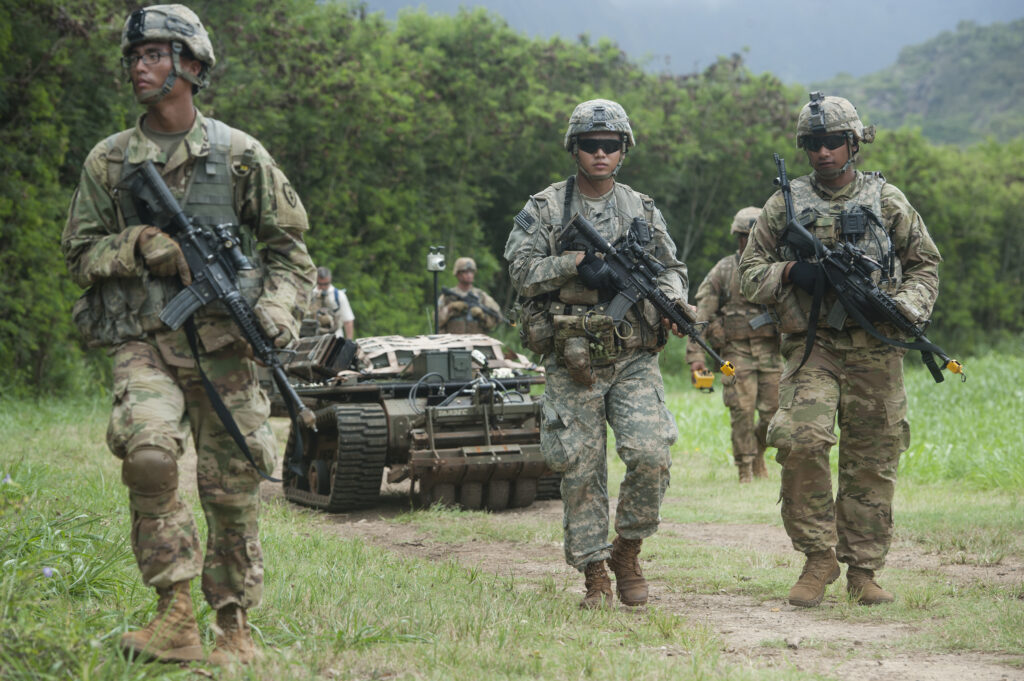
A Punisher unmanned ground vehicle follows soldiers during the PACMAN-I experiment in Hawaii.
Increasing the range of the platoon’s technologies 10-fold – from 500 meters to 5,000 – increases the area it has to control exponentially, from less than a square kilometer to more than 75 (about 30 square miles). “The key technology was a platoon artificial intelligence cloud,” Maciuba said, “the architecture that allowed our soldiers to be able to control robotic systems that were extending their reach within that battlespace.”
Each individual drone and ground robot needs its own narrow AI to navigate over terrain, analyze data from its sensors, and communicate with the rest of the force. But the most important AI is an overarching artificial intelligence to coordinate the whole platoon – an AI that doesn’t reside in any one physical location, but exists in a wireless cloud.
Instead of a single, central supercomputer that could be blown up, hacked, or have its communications jammed, the coordinating intelligence is distributed across multiple mini-servers carried by robotic vehicles and, potentially, individual soldiers. If one server is destroyed or loses communications, there are still others on the platoon network.
Of course, that requires the network to, well, work. If your cellphone has ever dropped a call, you know that’s not guaranteed. And battlefield networks have to overcome problems no commercial system faces, such as Russia’s extensive arsenal of electronic warfare systems to detect and jam transmissions. In 2017, the Army decided its tactical network was far too vulnerable to hacking and jamming, so it rebooted the entire modernization effort, and since then industry has been laboring mightily to build communications that can function even in the face of Russian or Chinese attack.
Maciuba is confident that American industry can deliver, he told me: “We actually have multiple [companies] that say they can build this architecture.”
One factor that makes this easier is the limited range involved. A five-kilometer radius from the platoon commander is a long way for traditional infantry operations, but it’s pretty short compared to many military communications systems. What’s more, with 40 soldiers and about as many unmanned systems spread throughout that area, weak signals can be relayed from radio to radio to radio, crossing long distances in several shorter hops.
Another crucial factor is limiting the bandwidth required. First-generation drones like Predator require human operators remote-controlling everything they do. (Basically, they still have a human crew, the crew’s just not inside the vehicle). That requires an uninterrupted full-motion video feed from the drone to the operators, so they can see what they’re doing, and an uninterrupted stream of moment-to-moment commands from the operators to the drone.
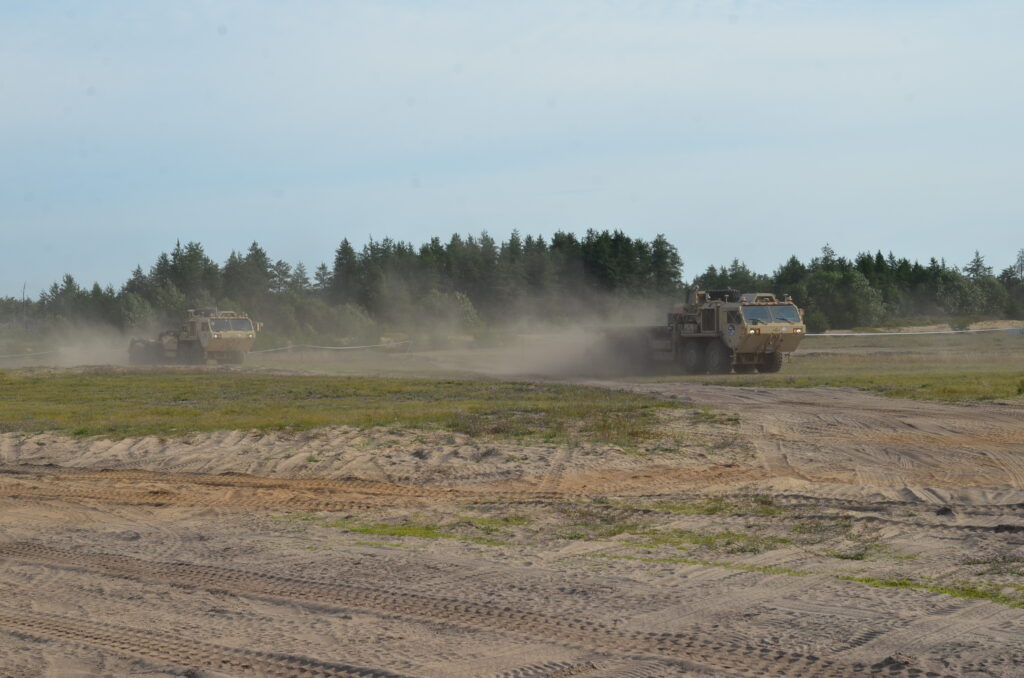
A convoy of manned and unmanned Army supply trucks using Autonomous Leader-Follower technology.
Modern drones, however, can fly themselves from point to point. The human just has to set the destination. Even ground robots, which have to deal with rocks, trees, mud, and more, are increasingly capable of detecting obstacles – which requires a lot of AI brainpower to interpret sensor data – and finding their way around them.
So the simulation assumed the robots could find their own way to an objective without a human remotely dictating every twist and turn along the way.
“We were not flying these things, we were not telling them how to drive,” Belanger said. “We were saying, ‘hey, this 100 by 500 meter area, I need you to go here,’ and they would figure out how to do it.”
“Soldiers are not controlling these systems,” Maciuba said. “They are commanding the AI cloud to control these systems.”
The Really Hard Part
Now, just getting places is not enough. Probably the most complex and critical task of the artificial intelligence – both the individual AI on each unmanned vehicle and the overarching AI in the platoon cloud – is to pull together sensor data, digest it, and condense all the millions of 1s and 0s into a single picture of the tactical situation that a human commander can understand.
“The thing that made this work was that platoon AI cloud that gave you the situational awareness of what was going on with that huge area,” Maciuba said.
Raytheon Multi-Domain Command & Control (MDC2) concept
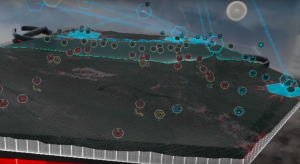 That level of artificial intelligence doesn’t exist – at least not yet. To simulate its effects, the Fort Benning wargame relied heavily on human beings, a neutral “white cell” that took the sensor data, interpreted it, and summed it up in text messages to Belanger and his team. (In the tech world, this is what’s called a “mechanical Turk”: human labor pretending to be automation). Developing an AI that can synthesize data this way in the real world is a major effort across the armed services, part of the wider push for what’s called Joint All-Domain Command & Control.
That level of artificial intelligence doesn’t exist – at least not yet. To simulate its effects, the Fort Benning wargame relied heavily on human beings, a neutral “white cell” that took the sensor data, interpreted it, and summed it up in text messages to Belanger and his team. (In the tech world, this is what’s called a “mechanical Turk”: human labor pretending to be automation). Developing an AI that can synthesize data this way in the real world is a major effort across the armed services, part of the wider push for what’s called Joint All-Domain Command & Control.
The human-driven process used in the Fort Benning wargame was intended to help the Army think about how to use such an AI without waiting for someone to build first. “It’s a surrogate,” Maciuba told me. “It’s a model of the real world that has met all of the requirements to be accepted for analysis.”
The next step is building the real thing – and testing that it really works.
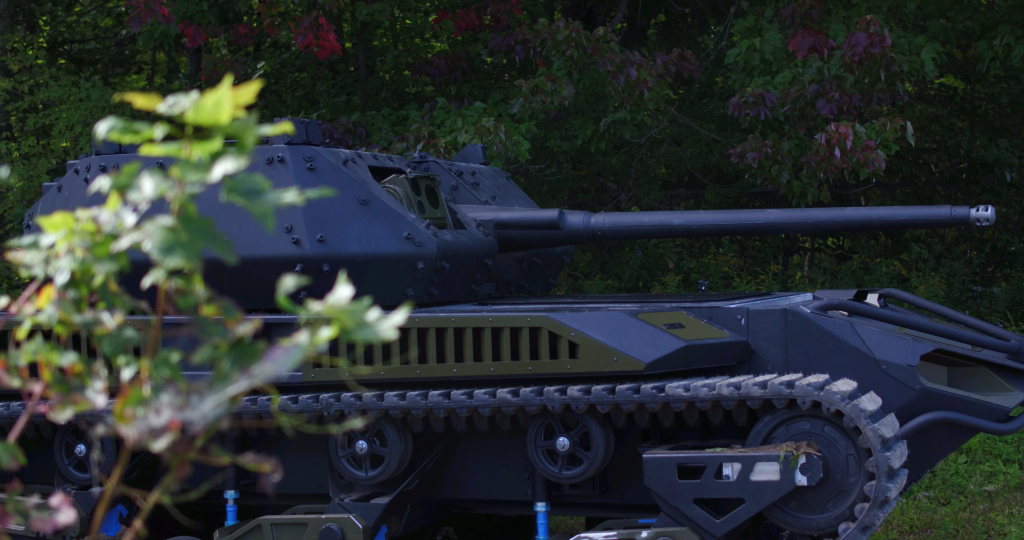
No comments:
Post a Comment